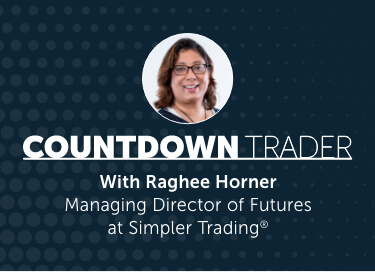Trading isn’t supposed to be a full-time job spent looking at charts and monitors all day long. What if I told you that you could trade ETFs and stocks in just 5 hours a week…
Well, it’s true!
The first step is…
To build a solid watchlist.
So how do you go about doing that?
Seek to understand the indices and their significance to the broader market. Yes, we all know what’s contained in each indice, but we don’t really stop to think about what each of those stocks mean to the market.
For example, if you see a setup on the NASDAQ, there’s really a play on healthcare, energy, financials, industrials, and transports. If you’re thinking of a setup on the Dow, there’s a tech play with a little bit of consumer discretionary mixed in. The S&P 500 is interesting, however, because it ends up caught in a tug of war between the NASDAQ and the Dow. The S&P can sometimes act a little bit like the Dow, but sometimes it can also act a little bit like the NASDAQ. The thing to remember is that if the NASDAQ and the Dow are setting up, I’ll oftentimes pass on the S&P 500.
Another thing I’ll say is to not make the S&P 500 your primary market to trade until you know what individual stocks and sectors are actually being affected.
Now that we’re paying attention to the stocks and ETFs within each indice, we can now begin to scan the market for opportunities, Gang.
There are loads of symbols in the markets. On average, about 3,000 relatively liquid stocks — however, depending on your idea of liquidity, you can bump that number up to almost 6,000 to 9,000. There’s no way to look at that many names nor is there any value in trying to do so. Looking at more symbols and thinking you need to monitor the market and your trades all day long won’t help you succeed.
It’ll actually do the opposite.
I want to be scanning within a very specific liquid pre-curated group of names. I use the ETFs as a way to let the market tell me where the interest, the volatility, and the volume attention is happening. Once I’ve gotten all that, I’ll pick from that group — knowing that I’ve got a very symbiotic, and very connected relationship between what I call the boats and tide. I don’t go scanning the markets, looking for a needle in a haystack. The ETFs give them to me.
Don’t make it complicated. I look at daily timeframes for about an hour a day, put in my alerts, wait for the alert to fire off and put in my trade.
Another common mistake is always looking for a “shiny and new” setup.
Sometimes, and far more often than you probably realize, there are multiple opportunities within a symbol you’re already trading. SMH has probably been the best example of this. If you have something that’s working because the structure is really, really good — stick with it. I’ve been in and out of SMH pretty much since the end of June 2020.
It’s been the gift that keeps on giving. Most of the time, the path of least resistance is up. I’ll just keep going back into that name again and again and again. So again, you don’t have to keep looking for brand new names. The allure of the shiny and new is very, very tricky in trading.
Before you start going about setting up a trade in a particular stock, ask yourself, what’s the edge? What’s this particular stock giving me, why do I want to trade it? And what else might be behaving in a similar group like semiconductors, what else might be behaving in a way better than the stock that I’m looking at?
Follow these steps and you’ll accomplish trading ETFs and stocks in just a few hours a week.



